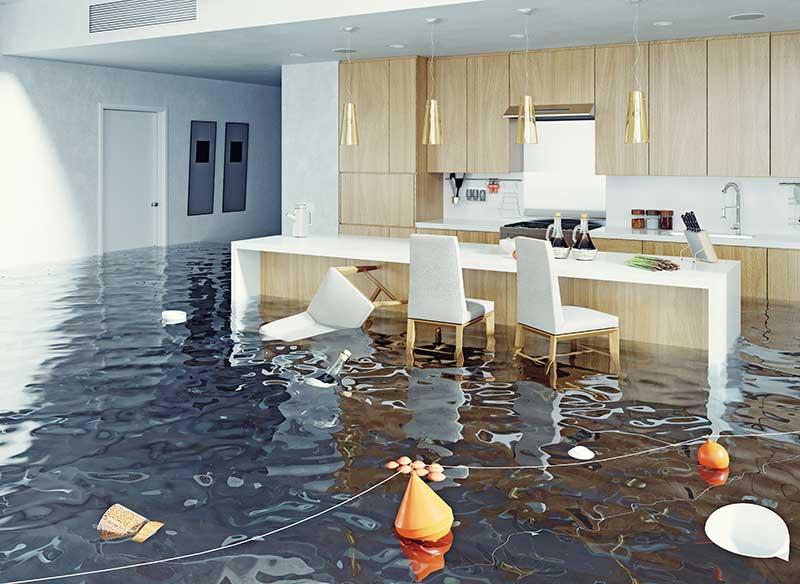Others
The Importance and Process of Timely Water Restoration

Do you hear confusing sounds of water gushing out of nowhere? It must be water leaking somewhere. No matter the problem, it must be restored before it gets too late. The importance of water restoration is known when the damage is not restored and it starts causing several problems along with health issues. It is essential to look for professionals who are experts and restore water damage to avoid further problems. Today our mission is to explain the importance of acquiring water restoration services and the stages of execution of the service.
1) Health Concerns:
Health concerns are one of the major concerns with water damage. The fungus grows rapidly and can penetrate rooms, ceilings, doors, etc. when water damage is left unattended for a long period, the chances of mold growth increase. It may cause health problems, especially for those with chronic health conditions such as asthma, who are more affected by water damage. The mold takes only a few hours to grow. Even if the water on the floors is cleared, you don’t find a solution to get rid of it. Always remember that mold grows in invisible places, such as behind the walls. Water damage is a major health concern for people residing or working on the property. Now the only solution to water damage is water restoration. There are several ways through which water damage can be fixed. Sanitation is a vital component in water damage restoration. Water damage should be removed promptly, with the correct drying process, to prevent mold growth or other contaminants that can impair one’s health. Drying everything as soon as possible reduces the likelihood of having health concerns as a byproduct of water damage.
2) Safety issues:
Another reason that persuades water restoration services is the safety issue. Water damage elevates the danger level if it is not attended to on time. Now you must be wondering why water damage is unsafe. In simpler words, water has a lot to do with electricity. It can cause hazardous water conditions to look after. Another monumental issue with water damage is electrocution. Water is a conduit of electricity. This means should the water come in contact with electricity, it will shock anyone in the water, causing serious injury with the potential for death. Unsafe electrical conditions can occur when there is water near outlets or appliances. If the water damage is near a swimming pool, make sure people are aware of the dangers of electric shock drowning if they are swimming nearby. If you run into water damage near electrical outlets, turn off your electricity and have a professional inspect your home or business to ensure electrical concerns are taken care of as quickly as possible.
The Process of Water Damage Restoration:
The water damage restoration process can be divided into three simpler stages:
1) Stage 1:
Getting rid of the standing water is the initial stage of the water damage restoration process. Right after the flood, the homeowners should remove the water immediately as it will make further processes easy for them. Hence, they absorb the excess liquid on their own. There are various techniques for removing standing water, such as buckets or mops, mopping with towels or rags, using large commercial fans and dehumidifiers, opening windows to allow air circulation to pull moisture out through evaporation, or simply throwing towels on top of puddles.
Stage 2:
Once you remove all the standing water, the next step is to remove any items and materials damaged by the water. As this process is tough, it may require professionals to assist you with removing items that involve health risks, such as insulation or drywall saturated with stagnant water, for more than 48 hours. There are several ways a home’s contents can be disposed of after water damage. Some companies offer junk removal services, while others specialize in debris disposal or complete demolition and rebuilds. When choosing a company for this process, it’s important to choose one that can remove potentially hazardous material.
Stage 3:
Finally, once all the water damage has been removed and any contaminated items have been removed from the home. A professional restoration service provider should handle this process for it to be successful. They often use dehumidifiers and disinfectants as part of their process, as well as ozone generators. When the water damage is done, you can install additional ventilation, select floors that can withstand moisture, and use paints that are created to be mold-resistant. Drywall is made with materials that can resist water damage.
Conclusion:
The article describes the importance of timely acquiring water restoration services and their stages. The process might look simple and easy, but without a team of professionals, you can never execute it effectively. It is always recommended to hire professional water restoration services whenever your property is damaged by water. Expert staff always gets the job done efficiently.

Others
Cloud ERP Implementation: Balancing the CFO and CIO Perspectives
Others
Exploring the Art of Flat Lay Photography: A Comprehensive Guide for Aspiring Photographers
Others
Are There Any Restrictions on the Make or Model of Cars That Can Be Sold Online?
Selling a car online has become a common practice, offering convenience and a wide audience reach. However, there are very few restrictions on which make or model of used cars can be sold online these days. Here are a few guidelines:
Age
Older vehicles, especially those over a decade old, often face a drop in demand due to financing difficulties. Buyers looking to finance their purchase might find limited or no options for older models. This does not mean you cannot sell your older vehicle online; it simply suggests that the pool of potential buyers might be smaller. It’s a crucial point to consider for those pondering “how to sell my car online effectively.”
Title Status
Title status is paramount in the sale of a vehicle. A clear, lien-free title in your name is essential to facilitate a smooth transaction. If your title is lost, obtaining a replacement can be a hassle, with varying restrictions based on your location. This is especially pertinent for sellers in Huntsville, AL, looking to sell your car online without any legal hiccups.
Odometer Accuracy
Odometer accuracy is a legal requirement. Any issues like digital rollbacks or malfunctioning odometers must be disclosed. Failing to do so not only hinders the sales process but also raises legal concerns. Transparency about the vehicle’s condition is crucial for a trustworthy sale, particularly for those looking to “sell car online” effectively.
Emissions Standards
Emission standards are increasingly stringent, and older cars often struggle to meet these. In certain states, cars that fail to pass smog checks or inspections cannot be registered. This aspect is vital for sellers, as it impacts the eligibility of their vehicle for sale in specific markets, particularly when considering online sales platforms.
Safety Recalls
Addressing safety recalls before selling your car is not just ethical but often legally required. Selling a car with unresolved major recalls can lead to legal consequences and tarnish your reputation as a seller. It’s advisable to fix such issues to ensure a safe and compliant sale, especially when using online platforms to reach potential buyers.
Flood Damage
Flood-damaged vehicles are a significant concern. They often have hidden issues that make them unsafe and are typically flagged by lending institutions, making financing difficult. It’s generally advisable to avoid selling flood-damaged cars online, as it could lead to complicated legal and ethical issues, not to mention the potential risk to the buyer.
Gray Market Cars
Gray market cars, or vehicles imported from other countries that do not meet U.S. safety and emission standards, pose a unique challenge. These cars might be difficult or impossible to register in the U.S., thus significantly limiting your buyer pool. Understanding these nuances is crucial, particularly for sellers in international or diverse markets.
In conclusion, while there are few outright restrictions on the makes and models of cars that can be sold online, various factors like age, title status, odometer accuracy, emission standards, safety recalls, flood damage, and gray market issues can impact the sale process. Being aware of these guidelines and ensuring compliance can help you smoothly navigate the online car selling process, whether you’re in Huntsville, AL, or elsewhere.

 Others10 months ago
Others10 months agoDavid T Bolno: Why Giving Back To The Community Is So Crucial

 Travel10 months ago
Travel10 months agoPractical And Essential Car Interior Accessories To Add Comfort And Convenience To Your Drive

 Travel10 months ago
Travel10 months agoBusiness Visa for CANADA

 Business10 months ago
Business10 months agoTop Reasons Why you Need to Consider Outsourcing Real Estate Photo Editing

 Health10 months ago
Health10 months agoGarlic Is The Best Vegetable To Treat Heart Problems

 Business10 months ago
Business10 months agoDead And Co Setlist What They Played At The Gorge Amphitheatre

 Fashion10 months ago
Fashion10 months agoTips For Choosing The Right For Engagement Diamond Rings

 Tech10 months ago
Tech10 months agoThe Best Way to Never Get Lost: Buy Wayfinding Signs!

